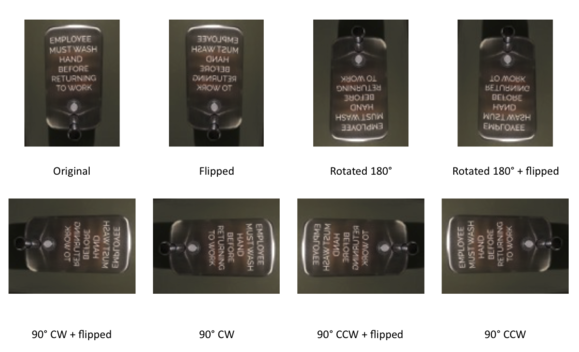How to I Get My Photos to Upload in the Correct Orientation
Louis Skrabec wants the angle on photo orientation:
I downloaded photos from my camera to my Windows PC. I rotated photos taken in portrait orientation 90 degrees using the photo editing characteristic and saved the changes. Then created a new shared anthology in iCloud and uploaded the photos. All portrait photos that I rotated to proper positions are back in landscape orientation. What did I practise wrong? How practise I fix them?
Rotation is a surprisingly complicated effect! What you lot're seeing is a common mismatch between editing and display software.
Modern digital cameras and smartphones rails the orientation of your device and rotate the preview you meet to exist the right away up, no matter what you lot do. Some devices might just allow 90-caste clockwise and counter-clockwise rotation from what's considered upright, but any usable smartphone can handle 180 degrees.
But an image sensor always captures the data without regard to orientation: it's simply grabbing photons and recording the measurements relative to the physical array in which it'due south located. Some cameras can store this as a raw file, unique to each photographic camera brand, that'southward the more often than not prefiltered data captured by a sensor. Others can just output in JPEG or another format, or you can opt to go JPEG and raw or JPEG instead of raw. (Raw is oftentimes capitalized as RAW, but it'south non an initialism.)
If the camera were to produce with data stored in the same orientation every bit you took the picture, except for the single orientation that matches how information comes out of the sensor array, it would need to create a 2nd epitome file into which to map each pixel from one orientation to the other, then delete that original file.
Before cameras lacked the computational power to handle this rotation, which was also RAM intensive: The image would need to be rotated earlier the sensor data was converted to a file format that compressed prototype data, like JPEG. "Lossy" file formats like JPEG utilise approximations via mathematical formats to depict regions of an image; some camera makers' raw formats are lossy as well. ("Lossless" compression is less efficient, only past identifying redundant patterns in a hunk of information, it allows an exact reproduction of the original data from the compressed file.)
It'south possible to rotate JPEGs without calculation additional image quality loss if the paradigm resolution divides perfectly into the 8 past 8 or sixteen past 16 grids that a given JPEG algorithm used. Not all cameras had the perfect units years ago, and non all even so practice.
But if a photographic camera (or other software) rotates a JPEG after it's been saved in that format, each decompression, rotation, and recompression progressively ruins the image.
The trick that camera makers came up with was to avoid rotating pixels and, instead, set a flag in the EXIF metadata that'due south incorporated in any image their camera exports. The orientation flag has ane of eight values, representing each rotation of 0 degrees, 90 degrees, 180 degrees, and 270 degrees, besides every bit mirror flips (flipped top to bottom and left to correct, and clockwise rotated top to lesser and left to right). (Rotations that aren't aren't at right angles always involves modifying paradigm information to guess the new bending.)


Whatsoever software that can display an image should be able to read this orientation flag and display a photograph in the correct orientation. Besides, any image-editing software, on opening a file and decompressing it (if necessary) to get in editable should too orient it first.
However, image software in Windows prior to Windows 8 couldn't read the orientation flag, and many Mac OS 10 apps used to suffer from the same problem, including iPhoto 4 and before versions.

I'yard surprised whatever software Louis is using in 2016 would take this problem, merely information technology would seem to exist a mismatch betwixt whatever it encoded in EXIF and what iCloud read from the upload—iCloud doesn't strip EXIF data.
Unfortunately, iCloud.com doesn't allow y'all edit photos once they're uploaded. In order to get the correct online rotation, you'll need to either use an iOS device or an OS X devices with iCloud Photograph Library synced to that collection, or use different software to handle the rotation and re-upload.
If yous're handy with the control line, in Bone X or Windows, you tin also use the free ExifTool to modify embedded EXIF data in photographs.
Ask Mac 911
We're always looking for bug to solve! Email yours to mac911@macworld.com including screen captures equally appropriate. Mac 911 cannot reply to email with troubleshooting advice nor can we publish answers to every question.
Source: https://www.macworld.com/article/227941/how-to-solve-incorrect-photo-rotation-after-sync-or-upload.html
0 Response to "How to I Get My Photos to Upload in the Correct Orientation"
Mag-post ng isang Komento